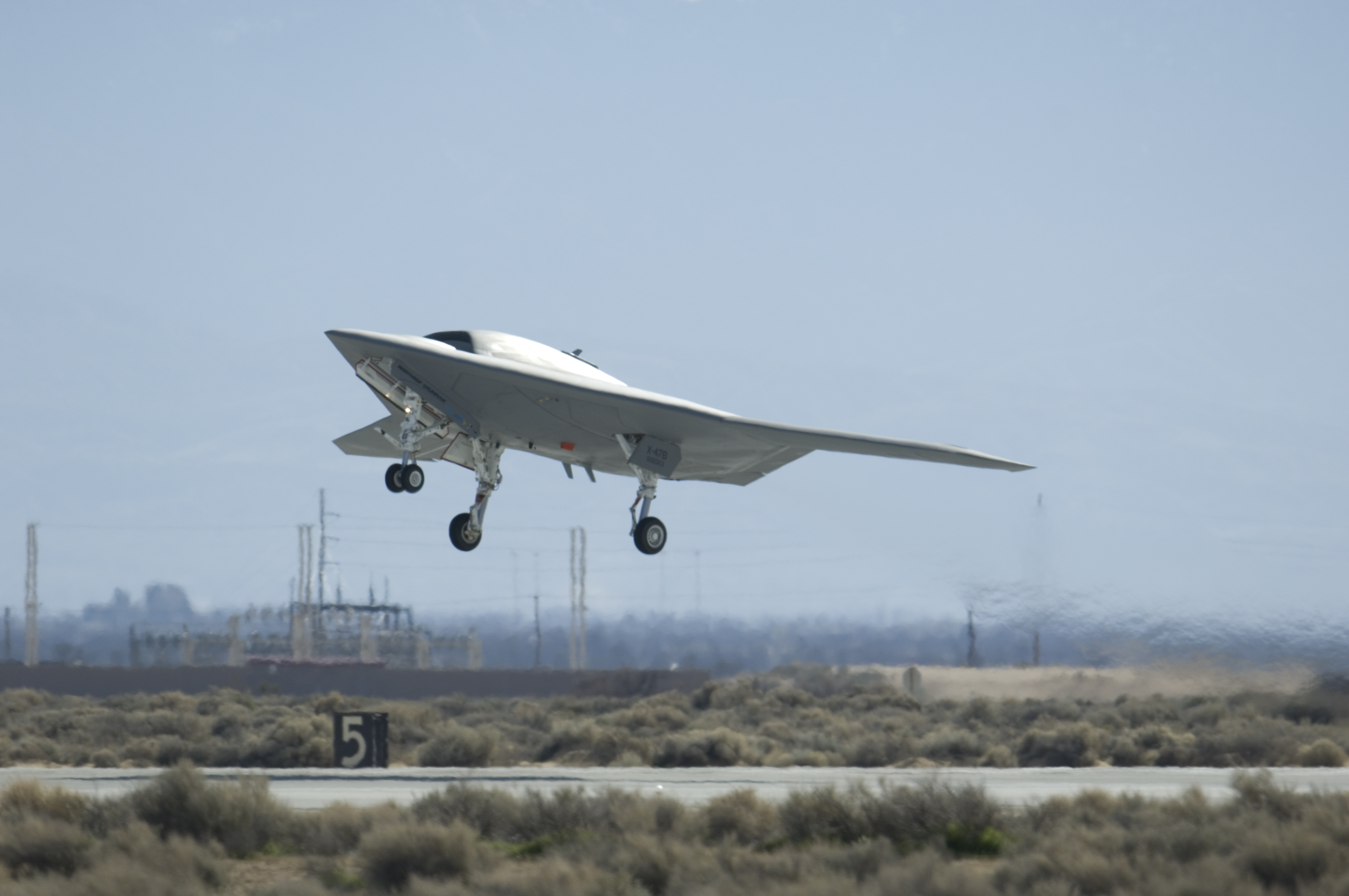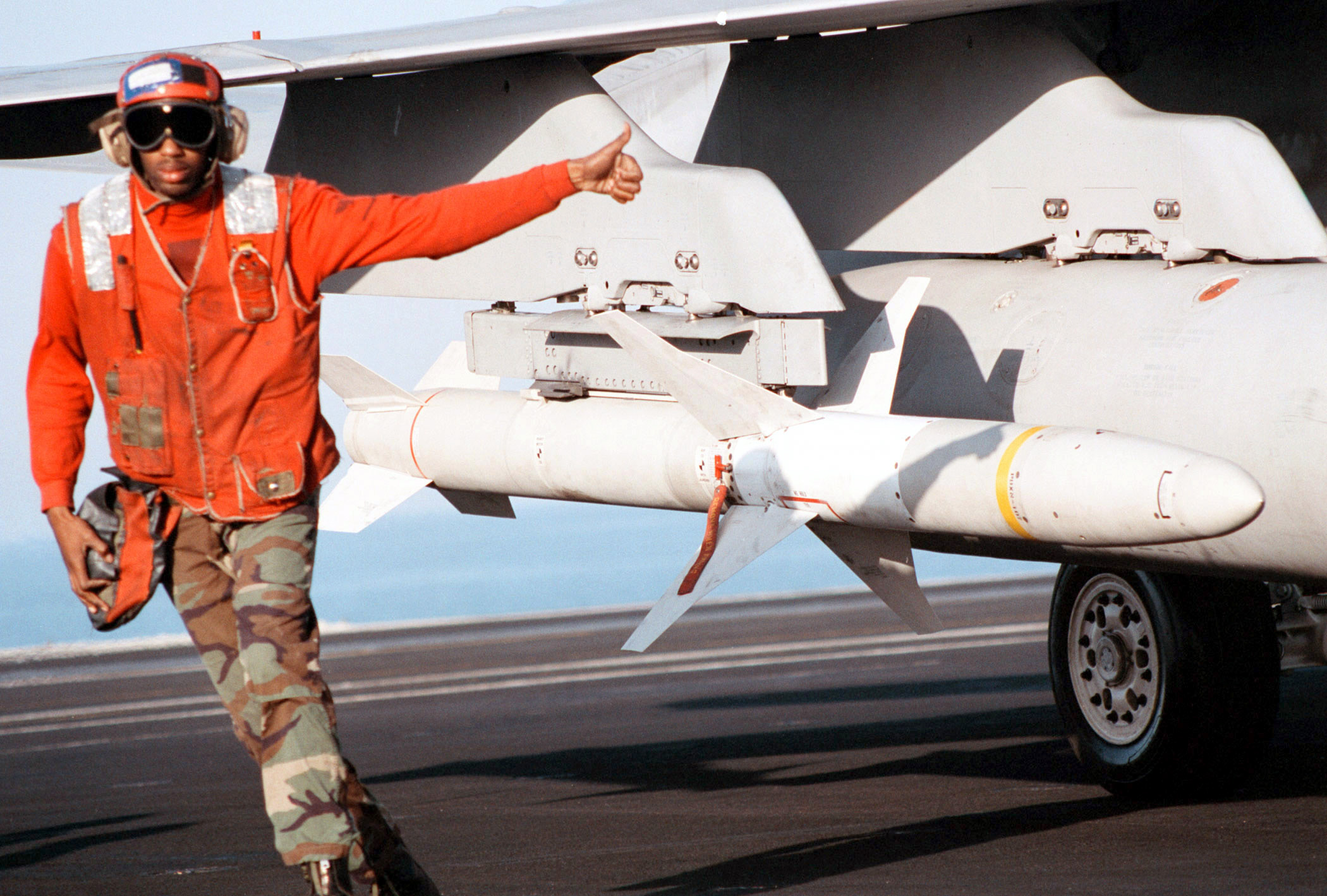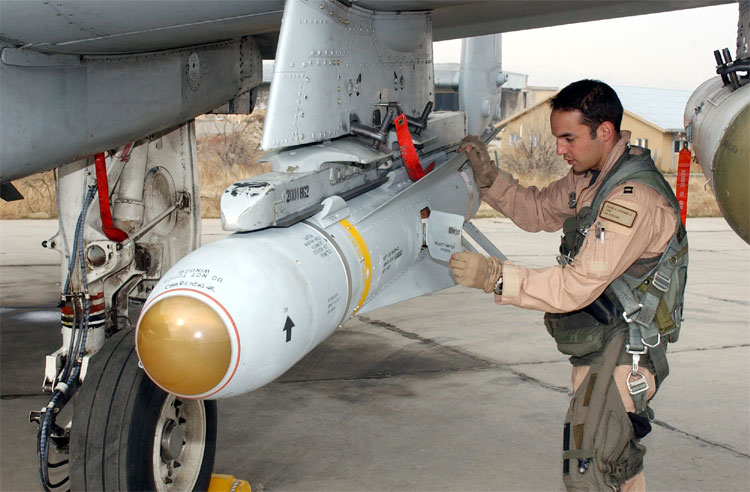|
Mikoyan Skat
The Mikoyan Skat (, skate) is a concept of a stealth unmanned combat aerial vehicle (UCAV) being developed by Mikoyan for the Russian Ministry of Defence since 2005. Development Origin of the Skat UCAV dates back to 2005 when Mikoyan started working on the project. Emphasis was put on low-observability and thus the drone was designed in a flying wing configuration, in the form of a triangle, with use of composite materials and with armament hidden in two internal weapons bays. Its only full-size mockup was presented for the first time at the MAKS 2007 international air show. However, the drone didn't get through the mockup stage, and work on the project was stopped later in 2012 due to lack of funding. As Chief executive officer of RSK "MiG", Sergei Korotkov said to the press earlier, the development of Skat was discontinued. By the decision of Russian Defence Ministry, Sukhoi Holding became the new Head Developer of the Strike UCAV project. Still, Skat experience would be used ... [...More Info...] [...Related Items...] OR: [Wikipedia] [Google] [Baidu] |
WikiProject Aircraft
A WikiProject, or Wikiproject, is an affinity group for contributors with shared goals within the Wikimedia movement. WikiProjects are prevalent within the largest wiki, Wikipedia, and exist to varying degrees within Wikimedia project, sibling projects such as Wiktionary, Wikiquote, Wikidata, and Wikisource. They also exist in different languages, and translation of articles is a form of their collaboration. During the COVID-19 pandemic, CBS News noted the role of Wikipedia's WikiProject Medicine in maintaining the accuracy of articles related to the disease. Another WikiProject that has drawn attention is WikiProject Women Scientists, which was profiled by ''Smithsonian Magazine, Smithsonian'' for its efforts to improve coverage of women scientists which the profile noted had "helped increase the number of female scientists on Wikipedia from around 1,600 to over 5,000". On Wikipedia Some Wikipedia WikiProjects are substantial enough to engage in cooperative activities with outsi ... [...More Info...] [...Related Items...] OR: [Wikipedia] [Google] [Baidu] |
MAKS (air Show)
MAKS (, ) is an international air show held at Zhukovsky International Airport, the home of the Gromov Flight Research Institute in Zhukovsky, Moscow Oblast, Zhukovsky, southeast of Moscow, Russia. The event was organized by the Russian Ministry of Industry and Trade (Russia), Ministry of Industry and Trade until 2009, more recently by the Government of Moscow and Aviasalon. The first show, Mosaeroshow-92, was held in 1992. Since 1993, the air show was renamed as MAKS and is held biennially on odd years. MAKS is an important event for the Russian aviation industry and the Commonwealth of Independent States. Although it started mainly as an entertainment event, the show soon became a marketplace where Russian aerospace companies could negotiate export contracts and Russian air carriers could make foreign contacts. The 2023 MAKS event was scheduled for July 25-30, 2023, but has been postponed to 2024, allegedly because of security concerns. In June 2024, the government of the Rus ... [...More Info...] [...Related Items...] OR: [Wikipedia] [Google] [Baidu] |
Northrop Grumman X-47B
The Northrop Grumman X-47B is a technology demonstration, demonstration unmanned combat aerial vehicle (UCAV) designed for aircraft carrier-based operations. Developed by the American defense technology company Northrop Grumman, the X-47 project began as part of Defense Advanced Research Project Agency, DARPA's Joint Unmanned Combat Air Systems, J-UCAS program, and subsequently became part of the United States Navy's Unmanned Combat Air System Demonstrator program, Unmanned Combat Air System Demonstration (UCAS-D) program. The X-47B is a tailless jet engine, jet-powered blended wing body, blended-wing-body aircraft capable of semi-autonomous operation and aerial refueling. The X-47B first flew in 2011, and , its two active demonstrators had undergone extensive flight and operational integration testing, having successfully performed a series of land- and carrier-based demonstrations. In August 2014, the US Navy announced that it had integrated the X-47B into carrier operations ... [...More Info...] [...Related Items...] OR: [Wikipedia] [Google] [Baidu] |
Boeing X-45
The Boeing X-45 unmanned combat air vehicle is a concept demonstrator for a "next generation" of completely autonomous military aircraft, developed by Boeing's Phantom Works. Manufactured by Boeing Integrated Defense Systems, the X-45 was a part of DARPA's J-UCAS project. Development Boeing developed the X-45 from research gathered during the development of the Bird of Prey. The X-45 features an extremely low-profile dorsal intake placed near the leading edge of the aircraft. The center fuselage is blended into a swept lambda wing, with a small exhaust outlet. It has no vertical control surfaces — split ailerons near each wingtip function as asymmetric air brakes, providing rudder control, much as in Northrop's flying wings. Removing the pilot and its associated facilities from the aircraft dramatically reduces the aircraft's cost. Ground-based pilots execute the higher level decisions, but the mechanical flying of the aircraft is autonomous. Variants X-45A Boeing built ... [...More Info...] [...Related Items...] OR: [Wikipedia] [Google] [Baidu] |
Sukhoi S-70 Okhotnik-B
The Sukhoi S-70 ''Okhotnik-B'' (), also referred to as ''Hunter-B'', is a Russian stealth heavy unmanned combat aerial vehicle (UCAV) that was being developed during the 2010s by Sukhoi and Russian Aircraft Corporation MiG. Several Test article (aerospace), prototypes underwent flight testing in 2019–2023 and, as of January 2024, it was projected that production could begin as early as the second half of 2024. The drone is based on the earlier Mikoyan Skat, designed by Russian Aircraft Corporation MiG, MiG, encompassing some technologies of the fifth-generation jet fighter, fifth-generation Sukhoi Su-57 fighter jet. , it was projected to act under the control of pilots of Su-57 jets in a potential future version, similar to the USAF Skyborg program. An out of control S-70 was deliberately shot down by a Russian Su-57 over Ukraine in October 2024. [...More Info...] [...Related Items...] OR: [Wikipedia] [Google] [Baidu] |
KAB-250
The KAB-250 is a family of aerial bombs developed in the 2000s. It comes in two forms, the KAB-250LG-E laser-guided bomb and KAB-250S-E satellite-guided bomb. It is being introduced into service with the Russian Air Force since 2020. KAB stands for "Корректируемая Авиационная Бомба" which means "Managed (corrected) aircraft bomb" and refers to high-precision weapons. The KAB-250 is long and weighs . Its warhead makes up of the total weight, of which is blast-effect high explosive. Russian sources credit it with a circular error probable, CEP of to . The technology of KAB-250 is also used for the larger KAB-500L. It has a noticeable, egg-shaped form and has been integrated on and dropped by Sukhoi Su-34 on Islamic State of Iraq and the Levant targets from 5000m altitudes. See also *KhAB-250 References {{reflist Aerial bombs of Russia Guided bombs ... [...More Info...] [...Related Items...] OR: [Wikipedia] [Google] [Baidu] |
KAB-500KR
The KAB-500Kr (Correctable air bomb - 500 kg) is an electro-optical TV-guided fire and forget bomb developed by the Soviet Air Force in the 1980s. It remains in service with the Commonwealth of Independent States, CIS and various export customers. The seeker employs a gimballed daylight television imaging sensor under a wide angle glass dome. Unlike the earlier US GBU-8, GBU-8 HOBOS and AGM-65 Maverick which employed contrast lock technology, the -Kr series guidance system employs Scene Matching Area Correlation technology more akin to the US Navy DAMASK seeker or Tomahawk (missile family), Tomahawk DSMAC. This results in the ability to attack low contrast targets by exploiting the contrast of nearby terrain features or objects. The bomb is 305 cm (10 ft) long and weighs , of which is a hardened, armor-piercing warhead capable of penetrating up to 1.5 metres (5 ft) of reinforced concrete. The weapon's seeker can lock onto a target at ranges of up to , dep ... [...More Info...] [...Related Items...] OR: [Wikipedia] [Google] [Baidu] |
Anti-radiation Missile
An anti-radiation missile (ARM) is a missile designed to detect and home in on an enemy radio emission source. Typically, these are designed for use against an enemy radar, although jammers and even radios used for communications can also be targeted in this manner. The earliest known anti-radiation weapon is a variant of the Blohm & Voss BV 246 radar guided bomb.Lepage, Jean-Denis G.G. (2009). Aircraft of the Luftwaffe 1935-1945. McFarland. p. 67. . Home-on-jam As jammers proliferated, a number of existing ARMs such as the AGM-88 HARM was modified to also target jammers as the source of radiation. Jammers also led to the addition of a feature to missiles that usually use a different targeting mode (e.g. active radar homing, semi-active radar homing, GPS), allowing them to switch to an anti-radiation targeting mode when radar deteriorates too much. Some examples are: * JDAM and JDAM-ER, air-to-surface GPS bomb * AMRAAM, active radar homing air-to-air missile * R-77, active ... [...More Info...] [...Related Items...] OR: [Wikipedia] [Google] [Baidu] |
Air-to-surface Missile
An air-to-surface missile (ASM) or air-to-ground missile (AGM) is a missile designed to be launched from military aircraft at targets on land or sea. There are also unpowered guided glide bombs not considered missiles. The two most common propulsion systems for air-to-surface missiles are rocket motors, usually with shorter range, and slower, longer-range jet engines. Some Soviet Union, Soviet-designed air-to-surface missiles are powered by ramjets, giving them both long range and high speed. Missile guidance, Guidance for air-to-surface missiles is typically via laser guidance, infrared homing, infrared guidance, optical guidance or via satellite guidance signals. The type of guidance depends on the type of target. Ships, for example, may be detected via passive radar or active radar homing, which is less effective against multiple, small, fast-moving land targets. There is some cross-over between air-to-surface missiles and surface-to-surface missiles. For example, there was ... [...More Info...] [...Related Items...] OR: [Wikipedia] [Google] [Baidu] |
Supersonic Speed
Supersonic speed is the speed of an object that exceeds the speed of sound (Mach number, Mach 1). For objects traveling in dry air of a temperature of 20 °C (68 °F) at sea level, this speed is approximately . Speeds greater than five times the speed of sound (Mach 5) are often referred to as hypersonic. Flights during which only some parts of the air surrounding an object, such as the ends of rotor blades, reach supersonic speeds are called transonic. This occurs typically somewhere between Mach 0.8 and Mach 1.2. Sounds are traveling vibrations in the form of pressure waves in an elastic medium. Objects move at supersonic speed when the objects move faster than the speed at which sound propagates through the medium. In gases, sound travels longitudinally at different speeds, mostly depending on the molecular mass and temperature of the gas, and pressure has little effect. Since air temperature and composition varies significantly with altitude, th ... [...More Info...] [...Related Items...] OR: [Wikipedia] [Google] [Baidu] |
Klimov RD-33
The Klimov RD-33 is a turbofan jet engine for a lightweight fighter jet and which is the primary engine for the Mikoyan MiG-29 and CAC/PAC JF-17 Thunder. It was developed in OKB-117 led by S. P. Izotov (now OAO Klimov) from 1968 with production starting in 1981. Previous generations of Russian supersonic fighters such as the MiG-21 and MiG-23 used turbojets, but western fighters such as the F-111 and F-4K introduced the use of afterburning turbofans in the 1960s which were more efficient. The RD-33 was the first afterburning turbofan engine produced by the Klimov company of Russia in the thrust class. It features a modular twin-shaft design with individual parts that can be replaced separately. Variants In early 1970s the RD-33 was selected for new light fighter jet, later becoming Mikoyan MiG-29, the other option was Tumansky R-67-300. Years of development has built an extensive engine family. A newly designed thrust vectoring Thrust vectoring, also known as thr ... [...More Info...] [...Related Items...] OR: [Wikipedia] [Google] [Baidu] |
RD-93
The Klimov RD-33 is a turbofan jet engine for a lightweight fighter jet and which is the primary engine for the Mikoyan MiG-29 and CAC/PAC JF-17 Thunder. It was developed in OKB-117 led by S. P. Izotov (now OAO Klimov) from 1968 with production starting in 1981. Previous generations of Russian supersonic fighters such as the MiG-21 and MiG-23 used turbojets, but western fighters such as the F-111 and F-4K introduced the use of afterburning turbofans in the 1960s which were more efficient. The RD-33 was the first afterburning turbofan engine produced by the Klimov company of Russia in the thrust class. It features a modular twin-shaft design with individual parts that can be replaced separately. Variants In early 1970s the RD-33 was selected for new light fighter jet, later becoming Mikoyan MiG-29, the other option was Tumansky R-67-300. Years of development has built an extensive engine family. A newly designed thrust vectoring nozzle (TVN) is now available. New models of the ... [...More Info...] [...Related Items...] OR: [Wikipedia] [Google] [Baidu] |






